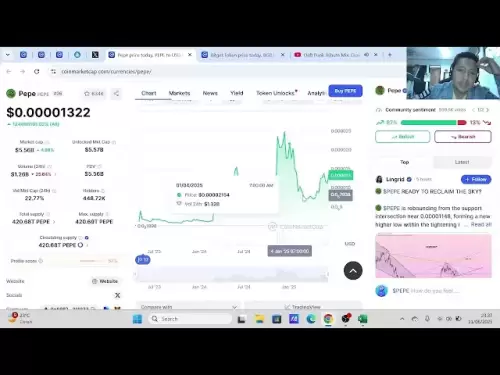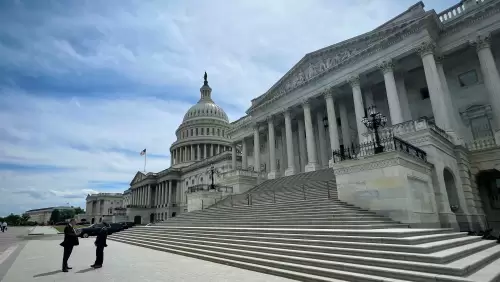 |
|
 |
|
 |
|
 |
|
 |
|
 |
|
 |
|
 |
|
 |
|
 |
|
 |
|
 |
|
 |
|
 |
|
 |
|
加密貨幣新聞文章
#Bitcoin Strategic Reserve Spending $180 million to buy the dip at $95,000! This company is hoarding 550,000 Bitcoins, and is Nvidia about to join in?
2025/05/05 21:26

The crypto world is buzzing again! Recently, there was big news — Strategy (formerly MicroStrategy), which treats Bitcoin as its lifeline, directly pulled out $180.3 million between April 28 and May 4, buying 1,895 Bitcoins at an average price of $95,167! This move is simply ruthless, bringing their total holdings to 555,450 Bitcoins, at a total cost of $38.08 billion, with an average cost of $68,550 per coin. Calculating it out, since 2025, their Bitcoin return has reached 14%! This operation, I can only say, I don’t understand the world of the rich, but it’s definitely exciting!
Let’s talk about Strategy first, which is practically a die-hard fan of Bitcoin. They have been all-in on Bitcoin since 2020, buying regardless of market fluctuations. This time, they continued to increase their positions at the high of $95,000, leaving the market astonished. It’s worth noting that during the week of April 28, Bitcoin had just surpassed $95,000, reaching a peak of $95,324, and they entered right at that point. Was this a prediction of the market's prediction?
Even more exaggerated is that they have significantly increased their holdings multiple times this year. For example, in January, they spent $1.1 billion to buy 10,107 Bitcoins at an average price of $105,596. Although the price has since corrected, they remain confident. This reminds me of the famous saying: ‘When others are fearful, I am greedy.’ Strategy’s recent moves have truly embodied this phrase.
However, their financial situation is quite nerve-wracking. In the first quarter, due to Bitcoin’s price correction to $82,445, they recognized an unrealized loss of $5.9 billion. But by early May, when the price rose to $97,300, they turned a profit of about $8 billion. This rollercoaster ride is even more thrilling than the A-shares market. More critically, their Bitcoin holdings now account for over 70% of their total assets, so if the market experiences a major drop, the consequences could be dire.
In addition to Strategy, there is big news — Nvidia is exploring the possibility of adding Bitcoin to its balance sheet. Although there has been no official confirmation yet, this news has already sent the market into a frenzy. If Nvidia really gets involved, it would be impressive, as this would mark another tech giant entering the Bitcoin reserve space after MicroStrategy and Tesla.
Historical experience tells us that such news usually boosts Bitcoin prices in the short term. For example, when Tesla announced its increased holdings in 2024, Bitcoin’s weekly increase reached 12%. If Nvidia really follows suit, Bitcoin might start another upward trend. However, some are concerned that if Nvidia is just talking and regulatory agencies implement stricter rules, it could impact market sentiment.
Recently, Bitcoin’s performance has indeed been somewhat extraordinary. Against the backdrop of the Federal Reserve maintaining interest rates in the range of 4.25% to 4.5% and continuing to push forward quantitative tightening, Bitcoin actually rose against the trend in April, breaking through the $95,000 mark. This indicates that Bitcoin’s safe-haven attribute as ‘digital gold’ is being recognized by more investors, especially in the context of escalating global trade tensions.
Technical analysis also shows that the triangular convergence pattern formed by Bitcoin in April may indicate a directional breakout. If it can hold above $95,000, the short-term target may point to $100,000. However, market volatility remains high; Bitcoin briefly surpassed $94,000 on April 23, and after a 24-hour increase of 6.42%, it fell below that price again. This reminds us that investing in Bitcoin should be done with caution.
Although Bitcoin has performed well recently, risks still exist. First, Strategy’s high-leverage accumulation strategy is like a ticking time bomb. Their debt has reached $42 billion, with interest expenses surging 1976% year-on-year, and financial costs accounting for over 500% of revenue. If Bitcoin’s price falls below $60,000, it could trigger forced liquidation risks, further impacting market confidence.
Additionally, macroeconomic uncertainty cannot be ignored. Although the Federal Reserve has temporarily maintained interest rates, market expectations for interest rate cuts still exist. If there are changes in future interest rate policies, it could put pressure on high-risk assets. Moreover, the tariff policies of the Trump administration
免責聲明:info@kdj.com
所提供的資訊並非交易建議。 kDJ.com對任何基於本文提供的資訊進行的投資不承擔任何責任。加密貨幣波動性較大,建議您充分研究後謹慎投資!
如果您認為本網站使用的內容侵犯了您的版權,請立即聯絡我們(info@kdj.com),我們將及時刪除。
-

-

- 兩個男人被控綁架和酷刑加密貨幣持有人無罪
- 2025-06-12 07:25:13
- 據報導,有兩名被指控綁架和酷刑的人曾訪問紐約市的一個加密貨幣持有人,對所有罪名都不不認罪。
-

- Floki Price收回了關鍵區 - 25%的集會即將到來嗎?
- 2025-06-12 07:25:13
- 弗洛基·普萊斯(Floki Price)在降至關鍵支持水平以下後,剛剛捲土重來,交易者開始引起注意。
-

- 21shares sui etf已向納斯達克列出的SEC提交
- 2025-06-12 07:20:17
- 已向納斯達克列出的SEC提交了21shares Sui ETF的19b-4版本
-

- 基於索拉納的模因硬幣爆炸成數十億美元的場景
- 2025-06-12 07:20:17
- 隨著時間的流逝,最初的笑話爆炸成了Solana區塊鏈上的數十億美元的場景。
-

- 當To-to-to-earn趨勢流行時
- 2025-06-12 07:20:17
- 當To-to-to-earn趨勢變得流行時,Toncoin(Ton)在2024年受到了極大的關注。但是,勢頭已經下降
-

- 美國參議院採取了最終批准其首次重大加密立法的最初步驟
- 2025-06-12 07:20:16
- 當加密貨幣世界觀看參議院逆轉長期以來抗加密的立場時,眾議院也取得了兩次關鍵選票
-

-





























































